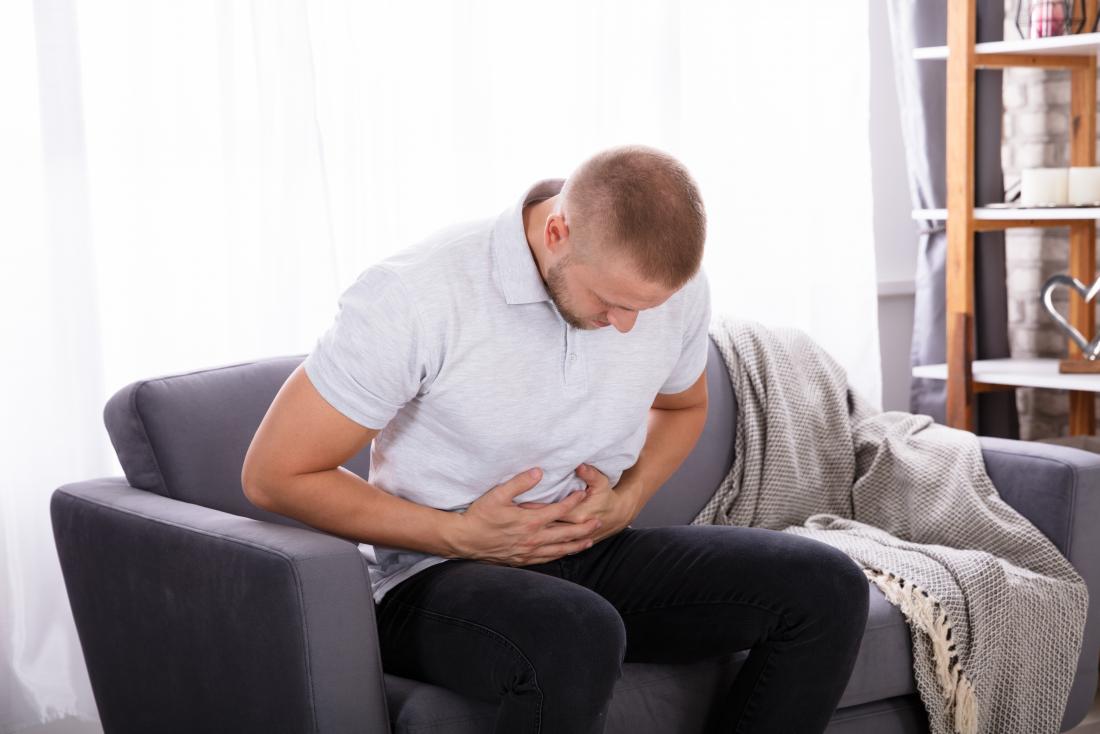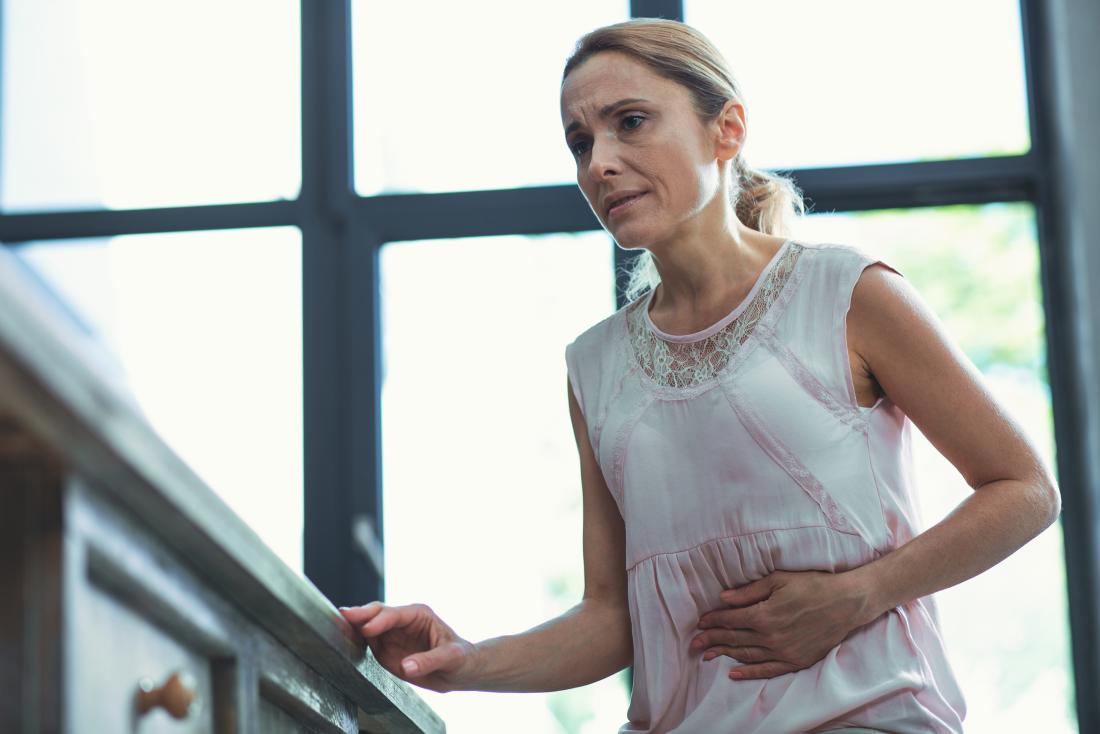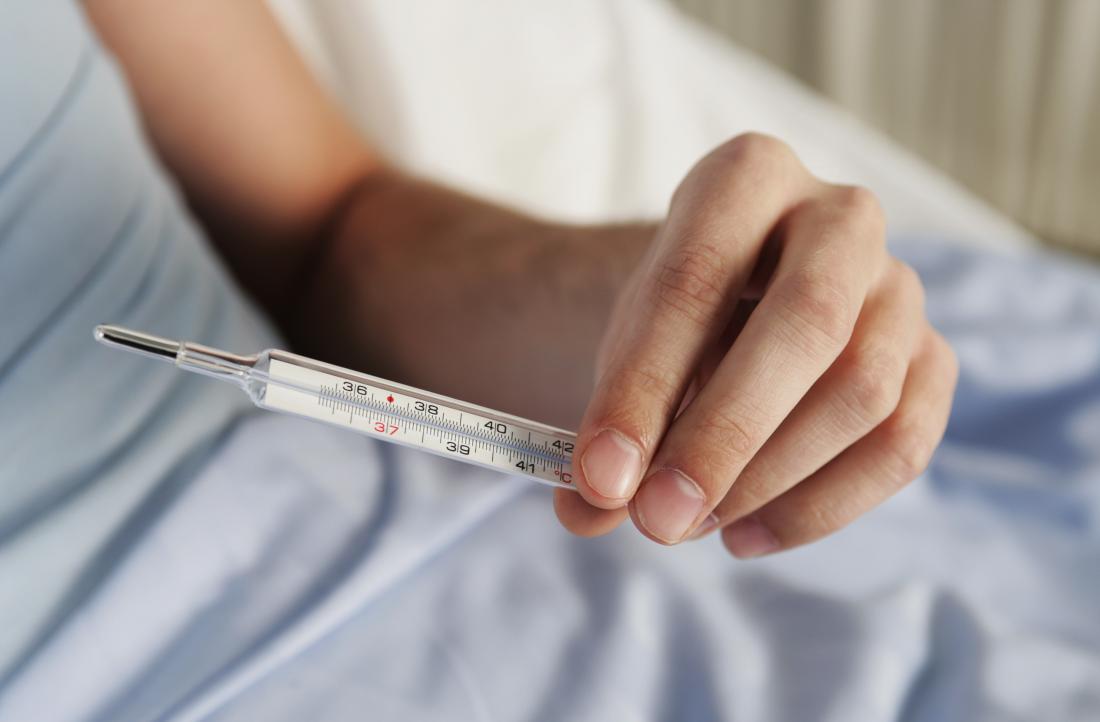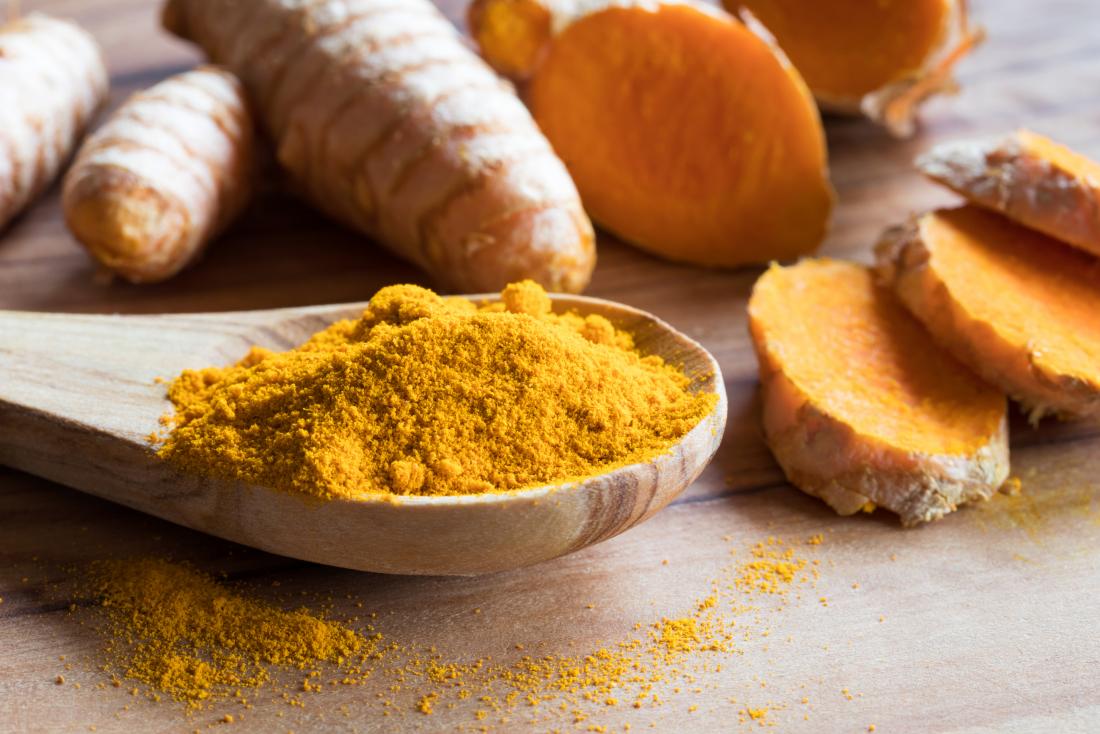

| 17-02-2021 (2197 ) | Categoria: Pain |
Almost everyone suffers from diarrhea at some point. It may be accompanied by abdominal pain or cramps. Some of the most common causes include sensitivity to some food, bacterial or viral infections, and the use of medications or alcohol.
It can also be caused by stress or chronic conditions, such as irritable bowel syndrome (IBS).
Here we describe some common causes of abdominal pain and diarrhea.
Diarrhoea can be acute and occur suddenly, or chronic and develop slowly and last a few days.
Some of the most common causes of abdominal pain and acute or chronic diarrhea include:

A viral infection can cause abdominal pain and diarrhea.
Diarrhoea could be caused by a bacterial or viral infection of the stomach and intestine, called gastroenteritis.
Bacterial gastroenteritis can be contracted by eating or drinking contaminated food or water. Symptoms usually appear within a few hours or days after consuming contaminated food.
You can also get viral gastroenteritis, which some people call stomach flu, from someone who has the infection.
Symptoms usually go away without treatment after a few days in both cases. To relieve discomfort you can try home remedies, such as drinking lots of fluids, resting and taking over-the-counter medications.
Parasitary infections can also cause acute diarrhea and abdominal pain. This type of infection often goes away within a few weeks. Persistent outbreaks may require medical treatment.
Something a person has eaten or drunk can cause diarrhea, abdominal pain, and other types of stomach problems. Symptoms usually occur for short periods and usually go away a few hours after eating.
Causes of diarrhea after eating include:
According to some research, more than 20% of people experience food sensitivity.
It's not clear why diarrhea occurs after eating. Keeping a diary of what you eat can help. Once you know what foods cause the problem, it's possible to address it.
Remedies could include adding new foods and making dietary changes slowly, eating fewer hearty foods, and limiting or avoiding trigger foods. People with coeliac disease should permanently remove gluten from their diet.
Overeating can cause indigestion, diarrhea and stomach pain because the digestive system has a hard time processing large amounts of food.
Both adults and children may experience the side effects of overeating, but are more likely to occur in children. This is because children can't always tell the difference between feeling hungry and feeling full.
To avoid overeating, people can:
Another useful technique is conscious feeding, which involves paying attention to the taste and texture of each bite. This includes avoiding distractions, such as television, during meals.
Persistent diarrhea may suggest a chronic condition, such as ISS. This condition does not damage the digestive tract, but may cause symptoms including:
According to the National Institute of Diabetes and Digestive and Kidney Diseases (NIDDK), about 12% of people in the United States have ISS. Most of them are women.
There is no cure, but people can manage their symptoms by:
Inflammatory bowel disease (IBD) refers to a group of conditions that damage the intestine, including Crohn's disease and ulcerative colitis. According to the Centers for Disease Control and Prevention (CDC), up to 1.3 million people in the United States have IBD.
Symptoms include:
IBD could cause damage to the digestive tract, unlike IBS. So, it's essential that people with the condition manage their symptoms.
The goal of treatment is to reduce inflammation that causes intestinal damage and digestive symptoms. Options include medications, supplements, dietary changes, and surgery.

Art therapy can help reduce stress and anxiety.
Stress and anxiety can stimulate evacuations, which can lead to diarrhea.
Stress could also play a role in the development of ISS or worsen symptoms.
There is a link between the brain and intestine, which may explain why stress can cause digestive problems.
For example, work stress can stimulate the gastric reaction.
People can reduce stress by:
People should consult a doctor or mental health professional who may recommend medications, therapy, or a combination of both for persistent or severe stress.
Too much alcohol can interfere with digestion and cause stomach pain, diarrhea, vomiting or other symptoms. People might consider limiting their alcohol intake to avoid these problems.
The Dietary Recommendations for Americans list moderate alcohol consumption as up to 1 drink a day for women and up to 2 drinks a day for men. You need to try to avoid alcohol for several days a week.
Some medications can also cause stomach problems, and many medications mention diarrhea as a side effect.
Medications that can cause diarrhea include:
Diarrhoea sometimes goes away after a few days of using a new medication as your body adapts. If diarrhea persists for several days after starting a new medication, you need to contact your doctor to suggest an alternative.
Pregnant women often experience diarrhea and other intestinal changes, possibly due to hormonal and structural changes in their body.
Changes in eating habits and new dietary sensitivities can also cause diarrhea during pregnancy.
If diarrhea persists for more than a few days during pregnancy, you need to see a doctor for a checkup and counseling.
Constant or severe diarrhea can suggest a serious medical problem, especially if there is blood.
Other possible causes of abdominal pain and diarrhea include:
People with diarrhea and abdominal pain should consult a doctor if symptoms:
See a doctor right away if diarrhea occurs with:

Eating healthily and not too much can help prevent abdominal pain and diarrhea.
Preventing all cases of abdominal pain and diarrhea is impossible.
However, the following tips can reduce the likelihood of developing symptoms.
Another tip to prevent abdominal pain and diarrhea from developing is to take probiotic supplements. Some research can help prevent traveler's diarrhea and diarrhea from antibiotic use.
A 2016 study in the medical journal Medicine suggests that the risk of traveler's diarrhea could decrease by 8% and diarrhea from antibiotic use by 52% when probiotics are consumed.
The most likely causes of abdominal pain and diarrhea include:
In cases of acute diarrhea, symptoms usually go away after a few days. Chronic conditions require long-term management to manage symptoms.
It is necessary to consult a doctor if you continue to have diarrhea after a week. And seek immediate medical attention if there are soft stools in addition to fever and other symptoms, or if diarrhea occurs in infants or older adults.
Â
Last medically reviewed on June 11, 2020

Many diseases and infections can cause stomach pain and chills. These may include the common cold, gastroenteritis, urinary tract infections and prostatitis.
Stomach pain may vary in terms of sensitivity. Sometimes it can be dull pain, and at other times, it can cause cramps or a burning sensation. Pain can also radiate to the back or other parts of the body.
Abdominal pain can also vary in duration and intensity. The pain may be intermittent or constant. Symptoms may appear suddenly or get progressively worse.
Those who experience stomach pain and chills usually have a bacterial or viral infection. Such infections can cause inflammation and irritation in the gastrointestinal or urinary tract.
Here's a list of some of the common causes of stomach pain and chills:

A bacterial or viral infection can cause stomach pain and chills.
Most adults can expect to have two or three colds each year, according to the Centers for Disease Control and Prevention (CDC). In children it's usually more.
The common cold causes symptoms including:
Symptoms usually improve after 7 to 10 days, although coughing can persist for 2 weeks or more.
Treatment includes home remedies such as resting, staying hydrated, and taking over-the-counter (OTC) medications.
Gastroenteritis occurs when the stomach and intestines become inflamed due to a bacterial or viral infection.
The most common form of viral gastroenteritis is what some doctors call stomach flu. Other causes include reactions to food or medications.
About 179 million cases of acute gastroenteritis are reported annually in the United States, according to a study published in the journal Emerging Infectious Diseases. Which makes it one of the most common diseases.
Signs and symptoms of gastroenteritis include:
Symptoms can last for up to a week. Some treatment options include resting, staying hydrated, eating soft foods, and taking over-the-counter medications.
Salmonella infection is a common occurrence in the United States that causes 1.2 million sick people a year, according to the CDC. People usually get infection from consuming contaminated food or water.
Symptoms usually begin within 12 to 72 hours of infection and may include:
Treatment is usually unnecessary, and most people recover within a few days. During this time, self-care measures can reduce discomfort. People with severe symptoms may require medication or even hospitalization.
A urinary tract infection (UC) occurs when the urinary tract is infected by bacteria or other microbes. Women are at higher risk of developing urinary tract infections than men; 40% to 60% of women experience one in their lifetime.
Symptoms may include:
Most urinary tract infections will require antibiotic treatment, but some home remedies can reduce discomfort until the infection goes away. Home remedies include drinking plenty of water, avoiding caffeine and using a thermal pad on your abdomen.

Drinking plenty of fluids can help small kidney stones pass through your urinary tract.
When minerals and salts build up in the kidneys, they can form hard deposits called kidney stones.
A 2018 review in advances in Urology suggests that 1 in 11 people in the United States develop kidney stones.
These hard deposits may not cause any symptoms until they change position in the kidney or urinary tract.
Kidney stones can cause:
Smaller ones may go unnoticed through the urinary tract. It helps a lot to drink fluids and take painkillers until the calculation is removed.
At other times, surgery or other medical procedure is necessary to remove the calculation.
Prostatitis is inflammation of the prostate gland, which is just below the bladder in men.
It has a prevalence rate of 8.2% and is "the most common urological diagnosis" in men 50 years of age or younger.
Bacterial prostatitis, which results from a bacterial infection, causes:
Treatment may include taking antibiotics and other medications. Using thermal pads, making dietary changes, and making lifestyle changes can provide benefits for managing symptoms.
Infectious mononucleosis is passed from person to person through saliva; they call it kissing sickness or monkey. In addition to stomach pain and chills, symptoms include:
Symptoms usually don't appear until 4 to 6 weeks after infection and last up to 2 months.
Treatment includes resting, staying hydrated and taking over-the-counter pain relievers. Some people may require medications for secondary infections.
Pneumonia is a lung infection that causes inflammation of the alveoli. In the United States, it is "one of the leading causes of hospitalization" in both adults and children.
Symptoms of pneumonia, which vary in severity, include:
Pneumonia can be fatal for older adults, children, and people with a compromised immune system. If symptoms occur, you should always talk to a doctor.
Treatment includes taking medications, resting and using other home remedies. Some people may need to be hospitalized.
Inflammation of the gallbladder, or cholecystitis, is swelling of the gallbladder, which is a pear-shaped organ located in the abdomen area.
Gallstones are the most common cause of gallbladder inflammation. According to a 2012 study in the medical journal Gut and Liver, about 10% to 15% of adults will develop gallstones. Other causes include tumors and infections.
Symptoms of cholecystitis, which often get worse after eating large or fatty portions of food, include:
Untreated gallbladder inflammation can cause serious complications. Some treatment options include hospitalization, fasting, intravenous fluids, and pain relievers. Surgery may be needed to remove gallstones or the entire gallbladder.
Inflammatory pelvic disease (PPE) occurs when sexually transmitted bacteria, including chlamydia or gonorrhea, spread to the fallopian tubes, uterus, or ovaries.
A 2017 research, published in Morbidity and Mortality Weekly Report,suggests that 4.4% of sexually active reproductive age women have PPE.
PPE doesn't always cause symptoms. Sometimes people only realize they have the condition when they have difficulty getting pregnant.
If symptoms occur, include:
Doctors often prescribe antibiotics to people with PPE. Sexual partners also require treatment.
An untreated infection can cause chronic pelvic pain, ectopic pregnancy and infertility.
Appendicitis is inflammation of the appendix, which is a segment of tissue attached to the large intestine.
Appendicitis affects 1 in 1,000 people in the United States, between the ages of 10 and 30, usually.
The condition causes pain in the lower right abdomen. This tends to get worse over time and may occur with:
Surgery is usually necessary to remove the appendix.
Diverticulitis occurs when diverticulums, bulging bags that can form in the lining of the intestines, develop infection or inflammation.
According to the National Institute of Diabetes and Digestive and Kidney Diseases, these bags can form in 35% of U.S. adults age 50 and younger, and 58% of all people over age 60. However, most cases do not evolve into diverticulitis.
Symptoms include:
Mild cases often go away with antibiotics, rest and dietary changes. Severe cases may require surgery.
Stomach pain and chills may have other less common symptoms, including:

A person who experiences stomach pain and chills, in addition to fever, should talk to a doctor.
See a doctor if stomach pain and chills last longer than a few days, or if they occur along with:
If you have any of the following symptoms along with stomach pain and chills, you need to seek immediate medical attention:
Many cases of chills and stomach pain are the result of a bacterial or viral infection.
Try the following to prevent infection:
Other methods of prevention and risk reduction include:
The prognosis for a person with stomach pain and chills depends on the cause of the symptoms. They are usually not a cause for concern if the cause is a common cold, stomach flu, or other easily treatable infection.
Most of these conditions will go away within a few days when you use home remedies, medications, or a combination of both.
However, these symptoms may also suggest a more serious condition, such as pneumonia or appendicitis, but this is less common. If you experience severe or persistent stomach pain and chills, you should consult your doctor.
Â
Last medically reviewed on May 28, 2020

Normal stools are brown due to healthy levels of bilirubin and excreted bile. Sometimes a person may notice faeces of a different color, including yellow.
Stool can change color for many reasons, including diet and underlying medical conditions.
In this article, we discuss the possible causes of yellow stool in adults and children, and explain when to see a doctor.
Possible causes of yellow stool include:

Turmeric in the diet can cause stools to turn yellow.
Turmeric in the diet can cause stools to turn yellow.
What a person eats can affect the color of their stool.
Carrots, sweet potatoes, turmeric, and foods that contain dyes can turn stools yellow.
A high-fat or gluten diet can also cause yellow stool.
If a person regularly has yellow stools because of their diet, they should avoid fatty foods, processed foods, gluten, or anything that causes stomach upset.
Stress and anxiety can have many physical effects on the body, including speeding up the digestive process.
As a result, your body may not be able to absorb all nutrients in food, which can cause diarrhea or yellow stool.
Taking stress relief measures, such as reducing commitments, practicing yoga, or therapy, can help improve physical symptoms.
If people with coeliac disease eat gluten, a protein in wheat, rye and barley, their immune system responds by attacking the tissues in their small intestine.
This immune response causes tissue damage and compromises the guts' ability to absorb nutrients.
In addition to causing yellow stool, coeliac disease can cause the following symptoms:
There is no cure for coeliac disease, but the condition can be handled well by avoiding gluten.
Different disorders of the pancreas can cause yellow or pale stools. These issues include:
In people with these conditions, the pancreas cannot provide enough enzymes for the gut to digest food. Undested fat can cause yellow stools that also look greasy or spurous.
Liver disorders, such as cirrhosis and hepatitis, can reduce or eliminate bile salts in the body.
Bile salts are essential for food digestion and nutrient absorption. Removing these salts can cause yellow stool.
Gallbladder and gallstone problems can also reduce the level of gallstones in the body. This reduction can cause a variety of symptoms, including:
Treatment will depend on the specific problem of the gallbladder. Treatment for gallstones, for example, may include medications to dissolve the stones. In some cases, surgery may be needed.
Gilbert syndrome is a genetic liver disorder that affects 3% to 7% of people in the United States.
People with Gilbert syndrome have periods when their bilirubin levels are too high. Symptoms include mild jaundice and yellow stools.
However, symptoms can be so moderate that most people don't notice them or know they have the disease.
Giardiasis is a common intestinal infection caused by a microscopic parasite. It is commonly called beaver fever. The giardia parasite can be contracted by ingesting giardia cysts, usually by consuming contaminated food or water.
Symptoms of giardiasis include:
A doctor may diagnose giardiasis by performing a stool test. Treatment requires antibiotics and can last up to a few weeks. Rarely, infection can be prolonged.
In children, yellow, brown and green tones are common colors in faeces. The best stool color for nursing babies and children is a mustard yellow.
A doctor should be seen if a child has red, black, or white stools, as this may indicate a problem.

Talk to a doctor if the color change lasts several days.
Yellow stools are usually due to dietary changes or food colors. However, if the color change continues for several days or other symptoms appear as well, it is best to see a doctor.
A person should see a doctor if they experience any of the following symptoms with yellow stool:
The cause of yellow stool is usually related to a person's diet, but it can also be the result of underlying health problems.
It is essential to observe additional symptoms and consult a doctor if the yellow color persists. Treatment will depend on the underlying cause.
Afegeix-hi un comentari: